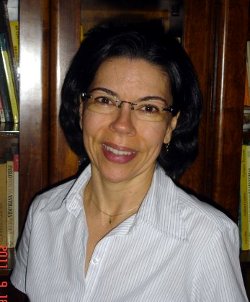
Mercedes Bustamante
(Brazilian Ministry of Science and Technology & University of Brasilia, Brazil)

BIO
Mercedes Bustamante is a biologist with a Masters in Plant Physiology (Federal University of Viçosa, Brazil) and doctorate in Geobotany (Universitat Trier, Germany). She is associate professor at the University of Brasilia (Department of Ecology) and currently is director of the Department of Policies and Thematic Programs of the Ministry of Science, Technology and Innovation in Brazil. She is coordinator lead author of the next IPCC Assessment report (Working group III – Mitigation), member of the editorial board of the journal Oecologia, member of the International Scientific Committee of the LBA and IBGP programs and of the International Nitrogen Initiative. She has experience in Ecosystem Ecology with emphasis on the following topics: savannas, changes in land use, biogeochemistry, global environmental change.
ABSTRACT
Functioning of savanna ecosystems – local, regional and global interactions
Savannas are the most common vegetation type in the tropics and subtropics. They cover extensive areas of South America, Africa and Australia, and also occur in Central America, India, and North America. In particular, tropical savanna ecosystems cover an area nearly 30% larger than the area of tropical forests and present high biological diversity at different levels and scales. Savanna ecosystems are controlled by the interactions between water and nutrient availability and fire frequency. In spite of its ecological relevance, these ecosystems are experiencing an intense process of land cover conversion mainly due to agricultural activities. Interactions between local and global environmental changes pose new challenges for the understanding of the functioning of savanna ecosystems and their responses. The Cerrado is one of the most diverse savannas in the world and is undergoing a rapid loss of habitats due to changes in fire regimes and intense conversion of native areas to agriculture. Variation in temperature extremes and in total amount of rainfall and altitude throughout the Cerrado determines marked differences in the composition of species. Typical cerrado ecosystems function as C sinks on an annual basis, although they work as source of C to the atmosphere close to the end of the dry season. Predicted changes in temperature, amount and distribution of precipitation vary according to Cerrado sub-regions with more marked changes in the northeastern part of the biome. Higher temperatures, decreases in rainfall with increase in length of the dry season could shift net ecosystem exchanges from C sink to source of C and might intensify burning, reducing nutrient stocks. Interactions with the heterogeneity in the composition and abundance of biological communities throughout the biome and with current and future changes in land use make it difficult to project the impacts of future climate scenarios at different temporal and spatial scales and new modeling approaches are needed.
